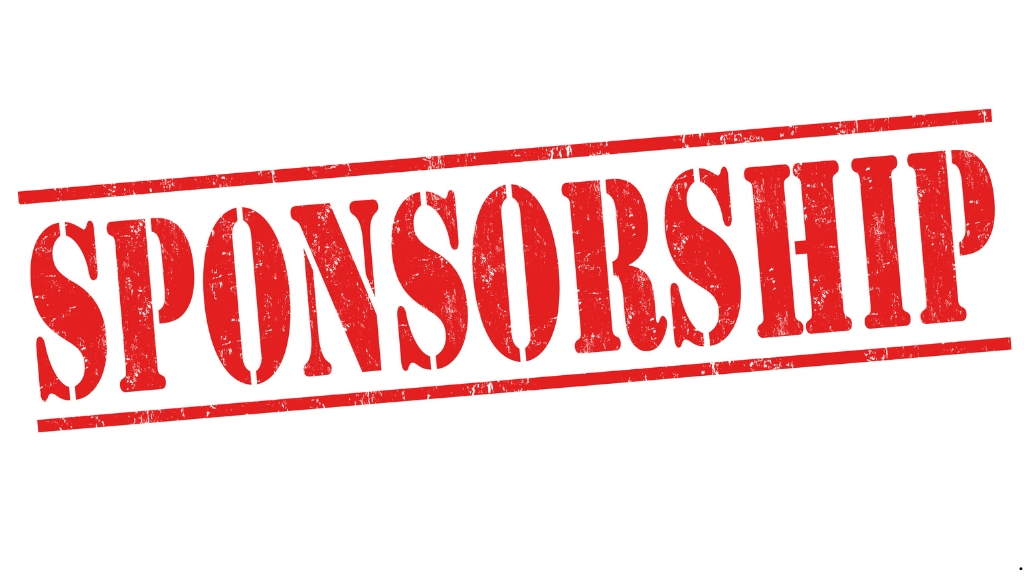
Sponsorships in sports have become more than just logos on jerseys or banners in stadiums. They’re powerful partnerships that connect brands with passionate audiences, creating moments that resonate far beyond the game. I’ve always been fascinated by how the right sponsorship can elevate both the sport and the brand, turning a simple collaboration into a global phenomenon.
In today’s competitive landscape, some brands are mastering the art of meaningful sponsorships. They’re not just investing money—they’re building narratives, fostering community, and aligning with values that matter to fans. These strategies don’t just win over hearts; they drive real results. Let’s explore the brands that are redefining what it means to win in the world of global sports.
The Importance Of Sponsorships In Global Sports
Global sports thrive with sponsorships, which serve as a vital element in their growth and sustainability. These partnerships contribute to the industry’s development while creating shared value for brands and sports organizations.
How Sponsorships Shape The Sports Industry
Sponsorships enhance the sports ecosystem by providing financial resources essential for operations, athlete development, and event management. Major events like the FIFA World Cup and the Olympics rely heavily on sponsor funding to cover logistics, infrastructure, and global broadcast rights. Additionally, corporate partnerships boost fan engagement. For instance, collaborations between teams and tech brands often introduce innovative experiences like augmented reality stadium features or personalized fan content.
Sponsorships also drive inclusivity by supporting untapped or underserved sports markets. Companies like Nike and Adidas invest in women’s sports and Paralympic events, raising visibility and reshaping perceptions. This dual growth strategy benefits both the sport and the sponsors.
Benefits For Brands And Sporting Organizations
Sponsorships provide brands with extensive global reach by connecting with sports audiences across various platforms. For example, Coca-Cola’s partnerships in soccer allow it to showcase its brand across global tournaments, strengthening its presence in diverse markets. Brands also gain authenticity by aligning their values with those of the sport, building deeper customer trust.
Sporting organizations, on the other hand, access essential funds and resources through these collaborations. For example, Emirates Airlines’ sponsorship of cricket tournaments and soccer teams ensures that teams receive adequate financial backing, enabling smoother operations. Partnerships also introduce commercialization opportunities, such as merchandise sales or digital fan memberships, increasing revenue streams.
Key Elements Of Successful Sponsorships
Effective sponsorships in global sports rely on several critical elements that strengthen brand positioning while fostering meaningful relationships with fans. These elements ensure measurable outcomes for both brands and sports entities.
Building Authentic Connections With Fans
Creating authentic connections with fans requires understanding their passions and values. Successful sponsors often engage by integrating into the fan experience, such as Coca-Cola’s personalized campaigns tied to FIFA sponsorships. Interactive platforms, like contests tied to major sporting events, help brands foster emotional resonance. Collaborating on community-driven initiatives, like youth sports programs, solidifies these connections.
Enhancing Brand Visibility And Engagement
Maximizing visibility and engagement combines on-the-field and digital strategies. Brands leveraging jersey sponsorships, such as Rakuten with FC Barcelona, gain continuous exposure to millions. Digital activations, such as augmented reality experiences during NBA games, create unique touchpoints for fans. Consistent multimedia campaigns during peak events amplify reach and reinforce brand recall.
Aligning With Athlete And Team Values
Aligning sponsorships with values ensures credibility and long-term partnerships. Brands like Patagonia partnering with environmentally conscious athletes elevate mutual missions. Supporting teams that advocate for social causes, such as Nike’s backing of women’s soccer, demonstrates alignment with progressive narratives. Authentic representation through these partnerships bolsters trust among increasingly discerning fanbases.
Notable Brands Excelling In Global Sports Sponsorships
Brands with exceptional sports sponsorship strategies amplify their reach while positively influencing both fans and athletes. Many have redefined the sponsorship landscape through creative campaigns and enduring partnerships.
Case Studies Of Winning Sponsorship Strategies
I recognize Coca-Cola’s collaboration with FIFA as a standout case of innovation. Coca-Cola leveraged its 48-year-long association with FIFA to create interactive campaigns, including personalized bottles with fans’ names and social media activations during the FIFA World Cup, driving both engagement and loyalty.
Adidas’ sponsorship of the FIFA World Cup illustrated its ability to dominate on-field branding. By supplying official match balls and outfitting teams, Adidas integrated itself into the event experience. This strategy boosted brand recall and demonstrated its functionality in real-world games.
Emirates Airlines’ partnership with major soccer clubs like Arsenal and Real Madrid showed the strength of logo placement on jerseys combined with stadium naming rights. Emirates enhanced visibility while connecting with millions of loyal club followers.
Examples Of Long-Lasting Brand Partnerships
Nike remains a leader with its multi-decade partnerships with global icons like Serena Williams and sports teams like FC Barcelona. By focusing on athlete-driven stories and aligning with values such as performance and perseverance, Nike ensured sustained relevance.
Visa’s continued support as an Olympic Games sponsor since 1986 highlights a commitment to inclusivity and global reach. This partnership not only funds critical operations but also promotes innovations like contactless payments at event venues, offering practical benefits for attendees.
PepsiCo’s long-standing association with the UEFA Champions League reflects effective audience targeting. By sponsoring this premier soccer competition, PepsiCo has connected with a worldwide fanbase through branded halftime shows and product promotions tailored to match-day experiences.
The Role Of Technology In Transforming Sponsorships
Technology reshapes how brands and sports organizations approach sponsorships. Digital tools and data-driven strategies are creating more personalized, impactful, and measurable collaborations.
Leveraging Digital Platforms For Engagement
Brands are using digital platforms to connect with sports fans in real time. Social media channels like Instagram, TikTok, and Twitter amplify sponsor visibility during live events, creating multiple touchpoints for audience engagement. For example, Coca-Cola’s real-time FIFA World Cup social campaigns encouraged fan participation through hashtags and user-generated content, expanding its reach.
Streaming services further engage audiences through targeted ads tailored to viewer preferences. During major events, platforms like YouTube and Twitch enable brands to integrate sponsorships within exclusive streams or highlight reels, improving interaction rates. Digital channels also power creative activations, such as augmented reality (AR) or virtual reality (VR) experiences, seen in Heineken’s fan zones during UEFA events.
The Impact Of Data And Analytics On Sponsorship ROI
Data analytics optimizes sponsorships by measuring and maximizing return on investment (ROI). Brands track metrics like audience demographics, impressions, and engagement to assess sponsorship performance. Tools such as Nielsen Sports and KORE Software provide detailed reports, enabling brands to refine strategies.
Predictive analytics forecasts future fan behaviors, ensuring investments align with trends. For instance, Adidas analyzes fan data for highly effective timing of product launches tied to athletic partnerships. Machine learning algorithms also help identify underserved fan clusters, guiding brands toward inclusive sponsorship opportunities. By leveraging insights, sponsors ensure measurable value for both parties.
Challenges And Future Trends In Sports Sponsorships
Shifting market dynamics and increasing scrutiny have introduced new challenges and opportunities in sports sponsorships. By addressing these complexities effectively, brands can maintain relevance and build stronger global connections.
Overcoming Sponsorship Risks And Controversies
Sponsorship controversies can damage both brands and sports organizations, especially when associated with scandals or ethical lapses. I notice that public backlash often occurs when sponsors are linked to organizations facing corruption allegations or athletes involved in misconduct, as seen in certain FIFA and IOC controversies. Mitigating these risks involves robust due diligence, ensuring alignment with ethical values, and proactively addressing any negative public sentiment.
In addition, political or social issues can turn sponsorships into polarizing topics. Brands must balance audience expectations with their values to avoid alienating fans. For example, brands like Nike have taken calculated stands on social causes while managing potential backlash.
Emerging Opportunities For Brands In Evolving Markets
Evolving markets, such as esports and women’s sports, present untapped growth opportunities for sponsorships. Esports has already reached over 500 million viewers globally in 2023, offering massive engagement potential for brands targeting younger demographics. My analysis shows that sponsorships in esports often focus on in-game integrations and live streaming platforms to connect with fans authentically.
Similarly, women’s sports are gaining visibility. Increased investment in leagues, such as the WNBA and international soccer, creates opportunities for brands to stand out by championing diversity and equity. Visa’s sponsorship of UEFA’s Women’s Soccer highlights how brands align with these growing sectors.
Furthermore, sustainability initiatives open doors for collaboration with environmentally conscious fans and organizations. Sponsors embracing green practices, such as Adidas’ use of recycled materials in its sporting events, can enhance their reputation in global markets.
Conclusion
Sponsorships in global sports have evolved into powerful tools for brands to connect with audiences on a deeper level. By aligning with fan values, embracing technology, and fostering inclusivity, these partnerships go beyond financial transactions to create lasting impact.
As brands continue to innovate and adapt to new trends, the potential for meaningful collaborations in sports remains boundless. Those that prioritize authenticity, community-building, and ethical practices will not only enhance their own visibility but also contribute to the growth and sustainability of sports worldwide.



